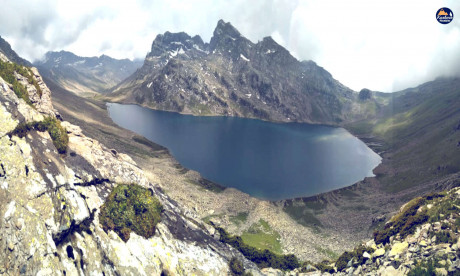The Himalayas, often referred to as the “Abode of Snow,” stand as an awe-inspiring testament to the grandeur of nature. Spanning across the vast expanse of Asia, this magnificent mountain range is not only a geographical wonder but also a cultural and spiritual icon. In this article, we delve into the beauty, significance, and diverse features that define the Himalayas.
Geographical Extent:
Encompassing approximately 25% of the world’s land area, the Himalayas extend over 2,400 kilometers, stretching from Nanga Parbat in Pakistan to Namche Barwa in the eastern regions. This colossal range spans across multiple countries, including India, Pakistan, Afghanistan, China, Bhutan, and Nepal. Its width varies between 250-300 kilometers, forming a complex system of parallel ranges.
Three Parallel Ranges:
The Himalayas consist of three parallel ranges, each distinguished by its elevation and geological age. The outermost range, known as the Siwalik Range, is the youngest. The middle range, called the Lesser Himalaya or Himachal, is characterized by rugged terrain and deep valleys. The Innermost range, referred to as the Greater Himalaya or Himadri, boasts some of the world’s highest peaks, including the majestic Mount Everest.
Cultural and Religious Significance:
For millennia, the Himalayas have held profound importance for the people of South Asia. Literature, mythologies, and religious beliefs are intertwined with the towering peaks and sprawling landscapes of this region. The Sanskrit name “Himalaya,” meaning “abode of snow,” reflects the perpetual snow cover on many of its peaks, captivating the imaginations of generations.
Glaciers and Rivers:
The Himalayan range is home to an extensive network of glaciers, with notable examples such as the Siachen Glacier, the world’s largest outside the polar regions. These glaciers feed some of the world’s major river systems, including the Indus Basin, the Ganga-Brahmaputra Basin, and the Yangtze Basin. The Ganges, Brahmaputra, and Indus rivers, originating from the Himalayas, play a pivotal role in sustaining life across the Indian subcontinent.
Challenges and Attractions:
In contemporary times, the Himalayas present both challenges and attractions for adventurers and explorers. Mount Everest, the world’s highest peak, has become a symbol of human resilience and determination. The glaciated landscapes, deep valleys, and pristine meadows offer a playground for trekkers, climbers, and nature enthusiasts seeking unparalleled beauty and adventure.
The Himalayas, with their towering peaks, diverse ecosystems, and cultural significance, embody the spirit of Asia’s natural splendor. From the spiritual realms of ancient traditions to the challenges of modern-day exploration, the Himalayas continue to captivate hearts and minds. As a symbol of strength, serenity, and timeless beauty, the Himalayas stand as an enduring testament to the wonders that nature bestows upon our planet.







